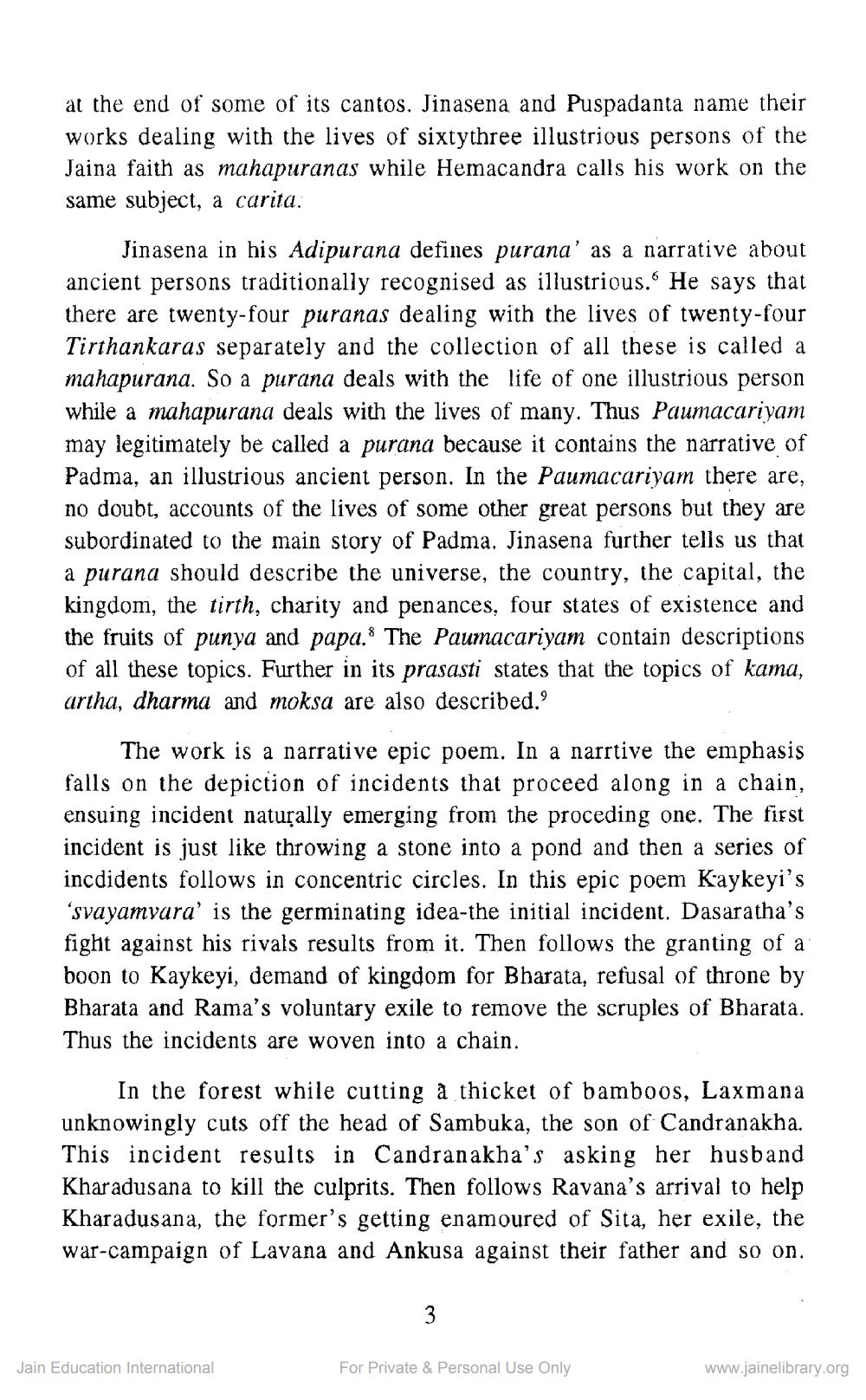Book Title: Jinamanjari 1995 09 No 12 Author(s): Jinamanjari Publisher: Canada Bramhi Jain Society Publication View full book textPage 5
________________ at the end of some of its cantos. Jinasena and Puspadanta name their works dealing with the lives of sixtythree illustrious persons of the Jaina faith as mahapuranas while Hemacandra calls his work on the same subject, a carita. Jinasena in his Adipurana defines purana' as a narrative about ancient persons traditionally recognised as illustrious. He says that there are twenty-four puranas dealing with the lives of twenty-four Tirthankaras separately and the collection of all these is called a mahapurana. So a purana deals with the life of one illustrious person while a mahapurana deals with the lives of many. Thus Paumacariyam may legitimately be called a purana because it contains the narrative of Padma, an illustrious ancient person. In the Paumacariyam there are, no doubt, accounts of the lives of some other great persons but they are subordinated to the main story of Padma. Jinasena further tells us that a purana should describe the universe, the country, the capital, the kingdom, the tirth, charity and penances, four states of existence and the fruits of punya and papa. The Paumacariyam contain descriptions of all these topics. Further in its prasasti states that the topics of kama, artha, dharma and moksa are also described.' The work is a narrative epic poem. In a narrtive the emphasis falls on the depiction of incidents that proceed along in a chain, ensuing incident naturally emerging from the proceding one. The first incident is just like throwing a stone into a pond and then a series of incdidents follows in concentric circles. In this epic poem Kaykeyi's 'svayamvara' is the germinating idea-the initial incident. Dasaratha's fight against his rivals results from it. Then follows the granting of a boon to Kaykeyi, demand of kingdom for Bharata, refusal of throne by Bharata and Rama's voluntary exile to remove the scruples of Bharata. Thus the incidents are woven into a chain. In the forest while cutting a thicket of bamboos, Laxmana unknowingly cuts off the head of Sambuka, the son of Candranakha. This incident results in Candranakha's asking her husband Kharadusana to kill the culprits. Then follows Ravana's arrival to help Kharadusana, the former's getting enamoured of Sita, her exile, the war-campaign of Lavana and Ankusa against their father and so on. Jain Education International For Private & Personal Use Only www.jainelibrary.orgPage Navigation
1 ... 3 4 5 6 7 8 9 10 11 12 13 14 15 16 17 18 19 20 21 22 23 24 25 26 27 28 29 30 31 32 33 34 35 36 37 38 39 40 41 42 43 44 45 46 47 48 49 50 51 52 ... 88
